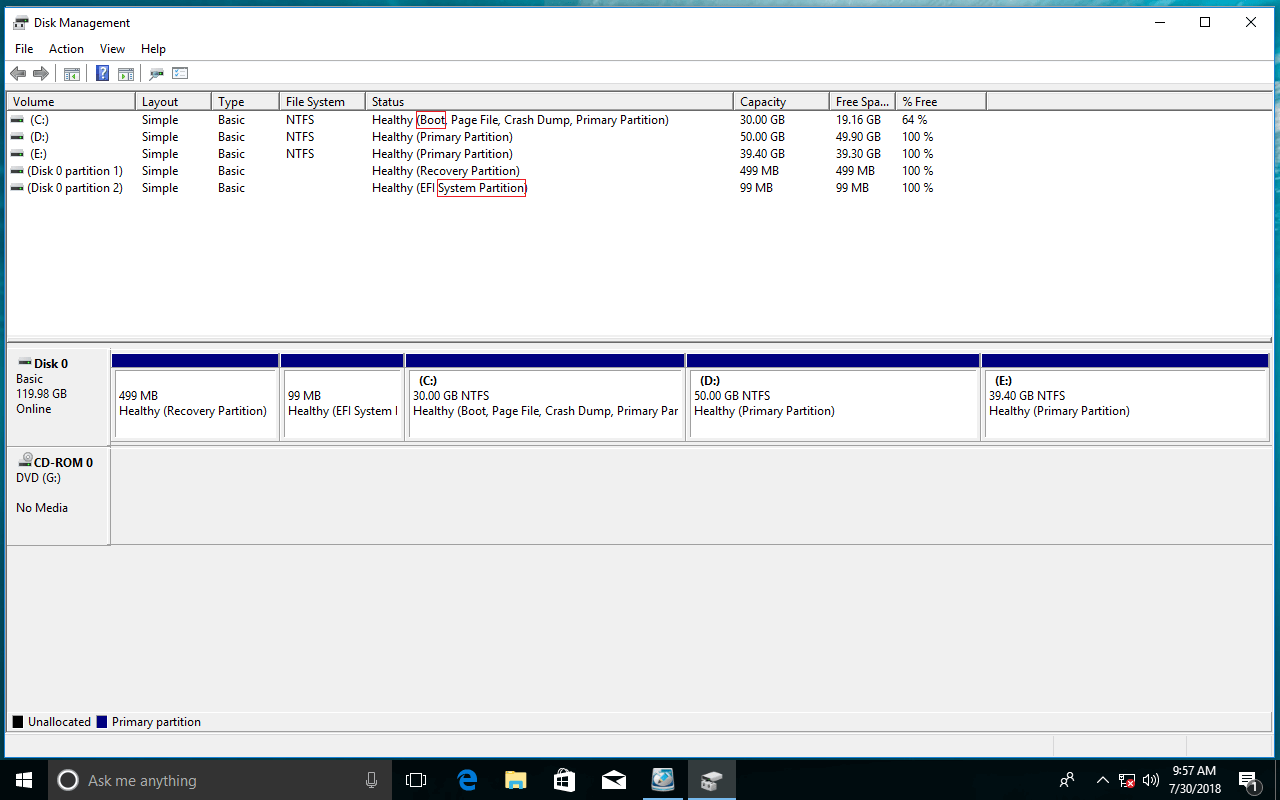
- How to create efi system partition windows 7 how to#
- How to create efi system partition windows 7 windows 10#
- How to create efi system partition windows 7 iso#
I then restarted and went back to the BIOS to change the default boot device back to Linux Boot Loader. This command should copy the boot files from the Windows partition to our existing EFI system partition so that an entry will be created by systemd-boot. Run bcdboot X:\Windows where X is the letter found in the previous step.Find the letter corresponding to the volume with the existing Windows filesystem (in my case it is C since Volume 0 is listed as my Windows filesystem).Run list volume to get the list of the partitions in this disk.Run select disk N where N refers to the number of the disk which contains our EFI system partition (for me it was Disk 0 so I ran select disk 0).Run list disk in DiskPart to get a list of existing disks.

Run diskpart to launch the disk management tool DiskPart.Press SHIFT+F10 on the Windows installation screen to open a command-line interpreter.Since I already had an existing EFI system partition, I skipped the steps used to create and format the partition and only run the following steps:
How to create efi system partition windows 7 how to#
described how to create a lost EFI partition from an installation media. Once the command has finished its execution, I rebooted from the newly created Windows installation drive (by changing the UEFI boot order in BIOS) and landed in the Windows installation screen. Backup and Restore is a Windows built-in tool in Windows 7, which was also included in Windows 8 and. Way 1: Windows backup EFI system partition with Backup and Restore. Once something unexpected happens, you can restore EFI system partition and make your computer work properly. $ sudo woeusb -target-filesystem NTFS -device Win10_20H2_v2_French_圆4.iso /dev/sdb Thus, it’s essential for you to backup EFI system partition.
How to create efi system partition windows 7 iso#
It is important that this USB drive contains no useful data since the filesystem will be completely overwritten by the Windows ISO image.Īs shown in the following command output, my USB drive is detected as the new device /dev/sdb:

Since the image uses around 6GB disk space, I got a 16GB USB drive to make sure I have enough disk space for the ISO image.
How to create efi system partition windows 7 windows 10#
The Windows 10 ISO can be downloaded from the Microsoft website. The first step is to create a bootable USB drive for Windows 10.

As I mentioned before, this partition was initially a System partition managed by Windows, but since I formatted the partition during my Linux installation, I now need to restore my Windows Boot Manager files on the partition in order to be able to boot both Windows 10 and Linux. Here, the interesting partition is /dev/sda1, which is the EFI system mounted as /boot for my Linux installation. The other partitions are managed by the Windows installation: /dev/sda2 is a Microsoft reserved partition and both /dev/sda4 and /dev/sda6 are recovery partitions ( Windows RE) automatically created by Windows 10. dev/sda6 1951475712 1953523711 2048000 1000M Windows recovery environmentĪs you can see, my Linux filesystem is /dev/sda5 and my Windows filesystem is /dev/sda3.


 0 kommentar(er)
0 kommentar(er)
